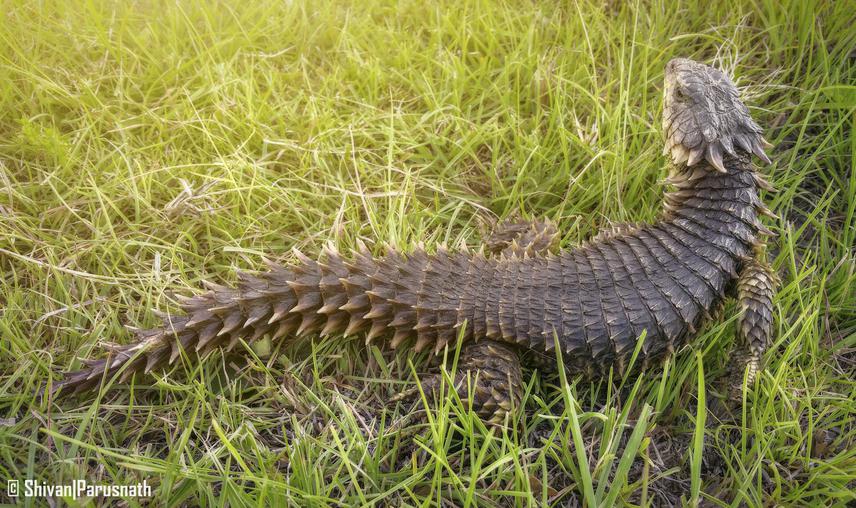Social media video featuring the project.
Ep 11 Grasslands
11 Feb 2014 Mpumalanga, South Africa, Africa Reptiles
Population Ecology and Social Structure of the Sungazer (Smaug giganteus), a Threatened South African Lizard
The project involves fieldwork across the entire distribution of the Sungazer which is endemic to the Highveld grasslands of the north-eastern Free State and southern Mpumalanga Provinces of South Africa.

The Sungazer (Smaug giganteus) is an endemic South African lizard listed as ‘Vulnerable’ by the IUCN. Populations are threatened by habitat destruction and fragmentation resulting from agricultural and urban developments, and poaching for the pet and traditional medicine trades. My MSc work on the species focused on elucidating baseline measures of the species’ ecology and life history, such that the conservation needs of the species could be accurately defined. This included quantifying the EOO, AOO, population densities across the distribution, overall population size, change in habitat over time and finally a reassessment of the species’ conservation status (for previous work, see: http://www.rufford.org/rsg/projects/shivan_parusnath). These measures provided a platform off which the first conservation efforts to protect the species could be initiated, including the planning of protected areas and stewardship programmes involving private land owners. The project also highlighted further gaps in the life history and ecology of the species, particularly regarding the genetic and social structure of the species over long temporal scales.
In this study, I aim firstly to investigate the genetic structure of the Sungazer across the distribution. This will provide an insight to the evolutionary history of the species and how translocations should be conducted such that the genetic integrity of the species is conserved. Secondly, gene flow will be investigated at broad (between populations) and fine (within populations) scales, thereby elucidating the systems of colonisation and dispersal. This is integral in understanding the effects that habitat fragmentation has on the species, specifically regarding the genetic integrity of populations. Further, the social structure of the species can be investigated by analysing the tissue of animals occupying the same burrow and adjacent burrows. Thirdly, long-term (~10 years) population dynamics will be investigated. Knowledge of how populations fluctuate naturally over time will aid in interpreting the declines measured in the first leg of research (21% over 35 years) as either a natural fluctuation or an anthropogenically mediated decline through habitat disturbance, or illegal harvesting.
To answer questions pertaining to the genetics of the species, tissue samples will be collected from Sungazer populations across the distribution and analysed using nuclear and mitochondrial gene sequences at the National Zoological Gardens’ (www.nzg.ac.za) research facility. The long term population study involves the monitoring and recapture of Sungazers that were fitted with PIT (Passive Integrated Transponder) tags in a previous study a decade ago.
Social media video featuring the project.
Ep 11 Grasslands